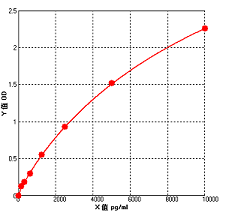Other Names
Human Immunoglobulin G ELISA kit
IgG
Background
Immunoglobulin is a group of globulins with special chemical structure and immune function that exists in the body fluids and on the surface of lymphocytes, it is a material base for antibodies. The five major classes of immunoglobulin defined by their different structures and functions are IgG, IgM, IgA, IgD and IgE. Their molecular size, charge, amino acid composition and carbohydrate content are very uneven. Immunoglobulin molecule carries out dual tasks—binding to antigens and stimulating antibody production.
Immunoglobulin G (IgG) is the most abundant immunoglobulin in serum, it makes up 75% of the serum immunoglobulin levels. The average amount of IgG circulating in a healthy adult is 9.5~12.5mg/ml, 40~50% of which are distributed in serum, and the rest are distributed in tissues. Human IgG can be divided into IgG1, IgG2, IgG3, and IgG4 subclasses. They vary in the degree of binding abilities in the process of complement activation.
|
Product Name |
IgG ELISA |
|
Species |
Human |
|
Product Size |
96/48 Tests |
|
Detection Range |
156-10000 pg/mL |
|
Sensitivity |
144 pg/mL |
|
Principle |
Sandwich ELISA |
|
Sample Volume |
100 ul |
|
Assay Time |
3.5 h |
|
Platform |
Microplate Reader |
|
Conjugate |
HRP |
|
Detection Method |
Colorimetric |
|
Storage |
2-8°C |
 |
For Research use only
Formular: y = (A - D) / [1 + (x/C)^B] + D A = 5.30429 B = -0.90329 C = 14005.20159 D = 0.01225 r^2 = 0.99975 |
| Sample | Cross reactivity(%) |
| Mouse IgG | 0.349 |
| Bovine IgG | --- |
| VERO HCP | --- |
| 293 HCP | --- |
| MDCK HCP | --- |
| OVA | --- |
| Chicken anti-SPA | --- |
| TRF | --- |
| Dilution Ratio | Range % | AverageLinearity % |
| 1.11×106 | 97.43-98.31 | 97.87 |
| 2.22×106 | 103.01-103.30 | 103.15 |
| 4.44×106 | 97.23-102.06 | 99.65 |
| 8.88×106 | 89.02-101.74 | 95.38 |
| 1.78×107 | 99.86-114.11 | 106.98 |
| 3.55×107 | 101.25-105.87 | 103.56 |
| 7.10×107 | 80.07-96.14 | 88.11 |
点击右上角Datasheet

 Datasheet
Datasheet



